BY LINCOLN ANDERSON | Updated Jan. 22, 1:00 p.m.: In the latest sea change at the Hudson River Park, Madelyn Wils has announced her upcoming resignation as president and C.E.O. of the park authority’s board of directors.
On Tues., Jan. 19, Wils wrote to Basil Seggos and Vicki Been, the respective chairperson and vice chairperson of the Hudson River Park Trust board of directors, informing them of her decision to step down on Feb. 5.
Noreen Doyle, the park’s executive vice president and longtime No. 2, will serve as acting president and C.E.O. after Wils leaves. There was no immediate word on the process of appointing a permanent replacement for the position.
A Tribeca resident, Wils has held the top staff post at the Trust for nine and a half years. Before that she was an executive at the city’s Economic Development Corporation, where she was in charge of waterfront projects. She was previously chairperson of Lower Manhattan’s Community Board 1, helping lead the district’s recovery after the 9/11 World Trade Center attack.
Asked why Wils is departing, a Trust spokesperson said she had planned to step down for some time and always intended to leave after about a decade. He said Wils just wanted make sure that the park’s major projects were set to start construction or open, and to help get the park and its finances through the challenges of the 2020s; with those items in place, she feels like this is an appropriate time to move on.
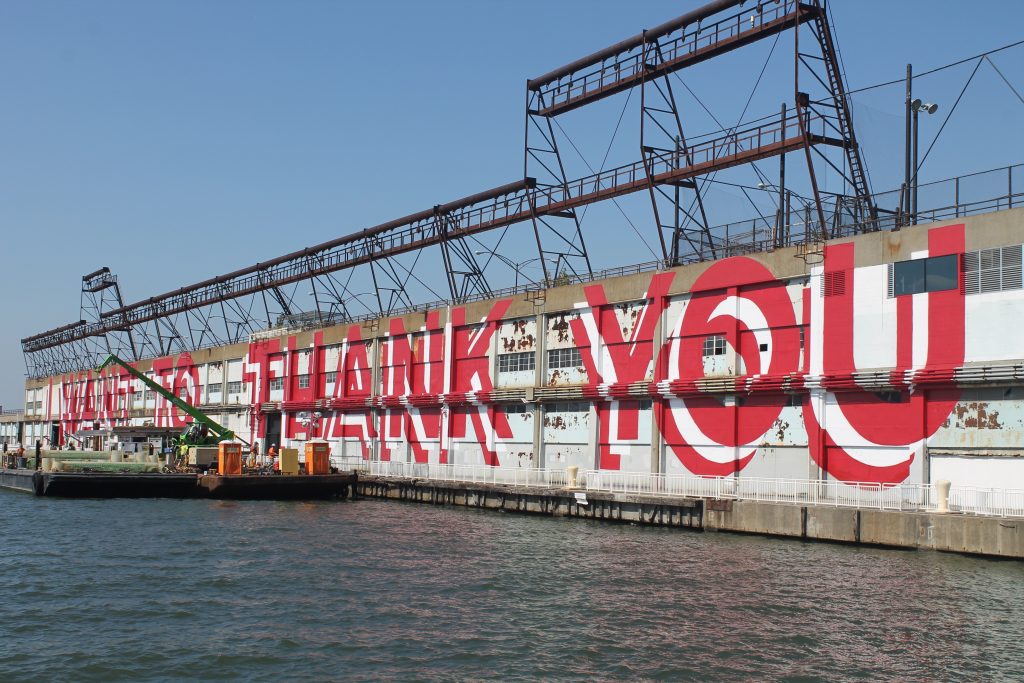
At the end of 2019, however, Wils and the Trust suffered a major public setback when Governor Cuomo put the brakes on a plan the Trust was pushing to develop 800,000 square feet of office space, with buildings up to nine stories tall, on Pier 40. Specifically, at the last minute, Cuomo vetoed legislation that had been passed by the state Legislature to allow office use on the 14-acre pier at W. Houston St.
“Pier 40 is a valuable asset to the surrounding community, offering recreational space in an area of the city that is more and more congested, home to an increasing number of young families requiring recreation space,” the governor said then. “The pier also is a rare asset in its proximity to the magnificent Hudson River.”
At the same time, Cuomo further asserted his control over Hudson River Park when he ordered that the city get the police tow pound off Pier 76, at W. 36th St., by 2021 or face millions of dollars in fines. The tow pound issue had festered for years, though the park’s founding legislation says the city must use its “best efforts” to relocate it off of the pier.
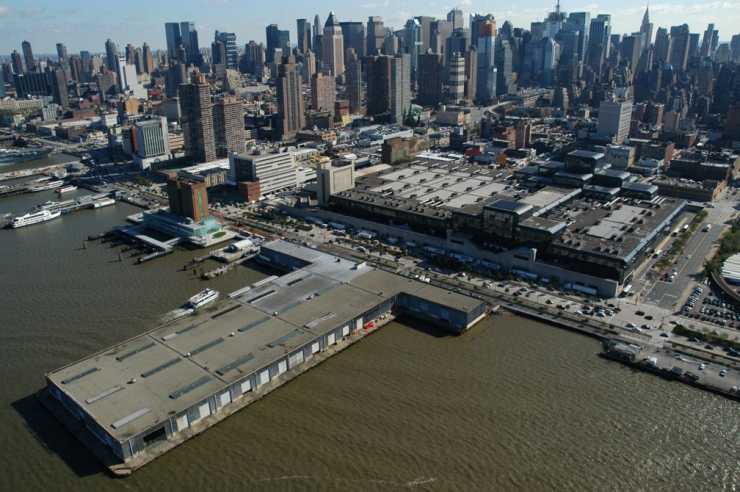
In her resignation letter, Wils touted the Trust’s accomplishments during her tenure.
“…[W]e have been able to accomplish so much over the last decade,” she wrote, “and we are well on our way toward accomplishing our shared goals of completing the park’s construction while ensuring it is also on solid financial footing. Prior to the pandemic, we were able to more than double [the park’s] revenues… .”
Topping the list of accomplishments cited in her letter was the creation of the Hudson River Park Special District in 2013. The legislation for the special district allows unused development rights — a.k.a. “air rights” — from the park’s piers to be sold and transferred across the West Side Highway to development projects bordering the park.
Wils said these air-rights sales so far have netted the Trust $152 million, including $100 million for Pier 40. The main structural problem of the massive pier, built in 1962, is that many of its 3,500 steel support pilings had become corroded. This stream of money has allowed the Trust to continue repairs on the pier’s pilings during the pandemic.


“Although we are still searching for a long-term solution for Pier 40, we are rebuilding the pier, including the ball fields, with $175 million of investments that are making the pier safe for the next several years,” Wils said.
Similarly, she was also proud that the Trust, again despite the pandemic, was able to open the new ecological pier at Pier 26, at N. Moore St. in Tribeca, in September.
The 4-mile-long joint city/state waterfront park, which was designated in 1998, runs from Chambers St. to 59th St.
“Four more major projects are also funded and in progress,” she wrote, “bringing the park tantalizingly close to completion. All told, we are spearheading nearly $1 billion of private/public partnerships in ongoing construction toward completion of the park.”
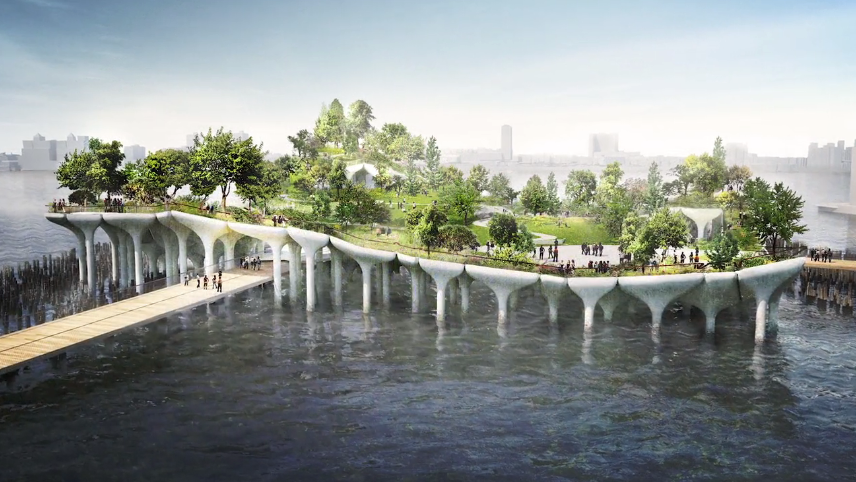
Pier 55 a.k.a. The Little Island, at W. 14th St., is on track to open this spring. Funded largely by a private donation by the Diller-von Furstenberg Family Foundation, the $250 million “arts island,” featuring live performances, will be accessible by two foot bridges.

Just to the north of there, at 16th St., Pier 57 is being redeveloped with Google offices as an anchor tenant. The Trust is currently working to find a food-market operator for the pier. The site will also include classrooms for the River Project, a nonprofit focused on the Hudson’s aquatic habitat and wildlife.
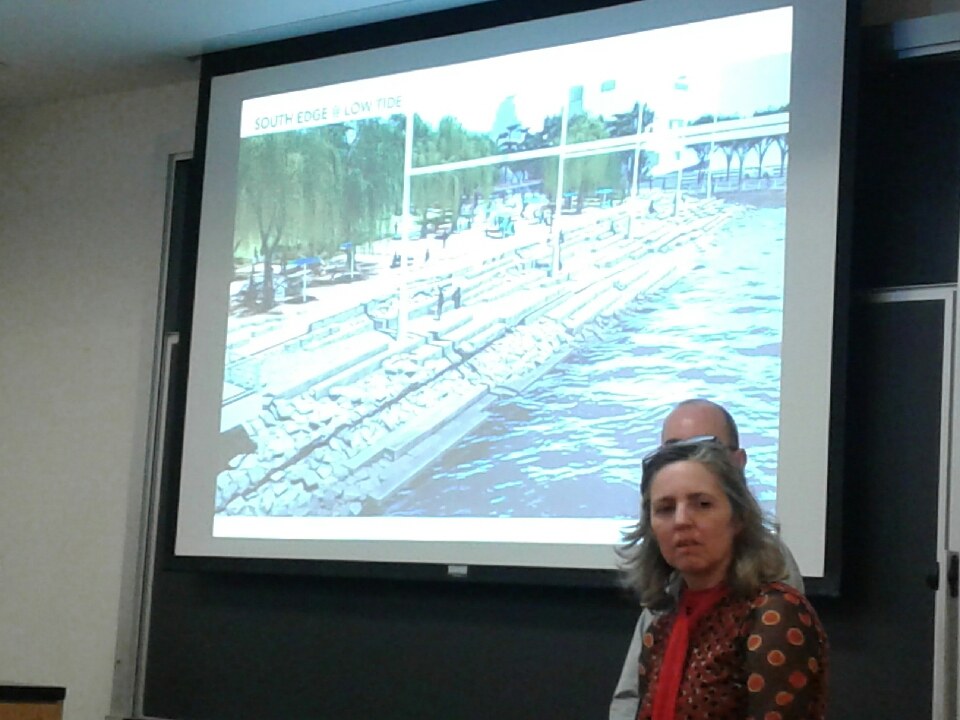
Meanwhile, to the south of Pier 55 and just to the west of the Meatpacking District, the Trust is redeveloping Gansevoort Peninsula into a 5.5-acre open space that will feature Manhattan’s first beach (at least in modern times), a sports playing field and a salt marsh. Construction will start this spring.
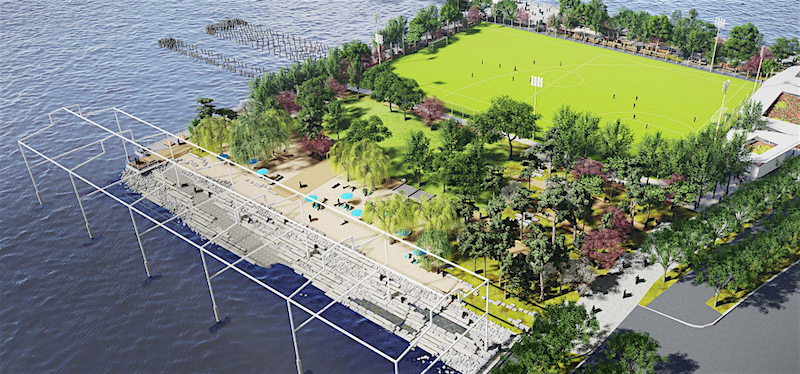
Also breaking ground this spring at W. 47th St., Pier 97, a long-delayed project, will receive a lawn, playground, “sunset plaza” and youth fields, plus a connection to Riverside Park South.
In addition, on the southern edge of Gansevoort, “Day’s End,” a giant-sized public artwork by David Hammons, sponsored by the Whitney Museum of American Art, will recreate the ghostly outline of a pier shed that once stood there. The piece is slated to be finished by this spring.
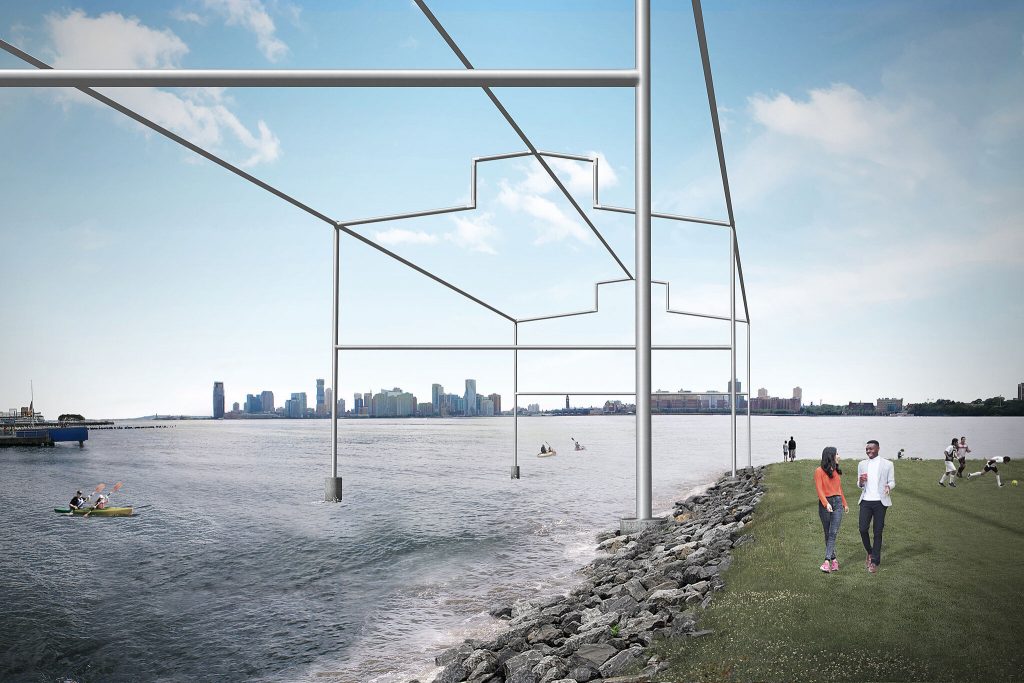
The park also weathered some disastrous incidents during her time at the helm, Wils noted, including flooding during Tropical Storm Irene and Hurricane Sandy and the terrorist attack by an ISIS-inspired fanatic on the Hudson River bike path on Halloween 2017 that killed eight people. (Technically, the bike path is owned by the state Department of Transportation but the Park Trust manages it.)
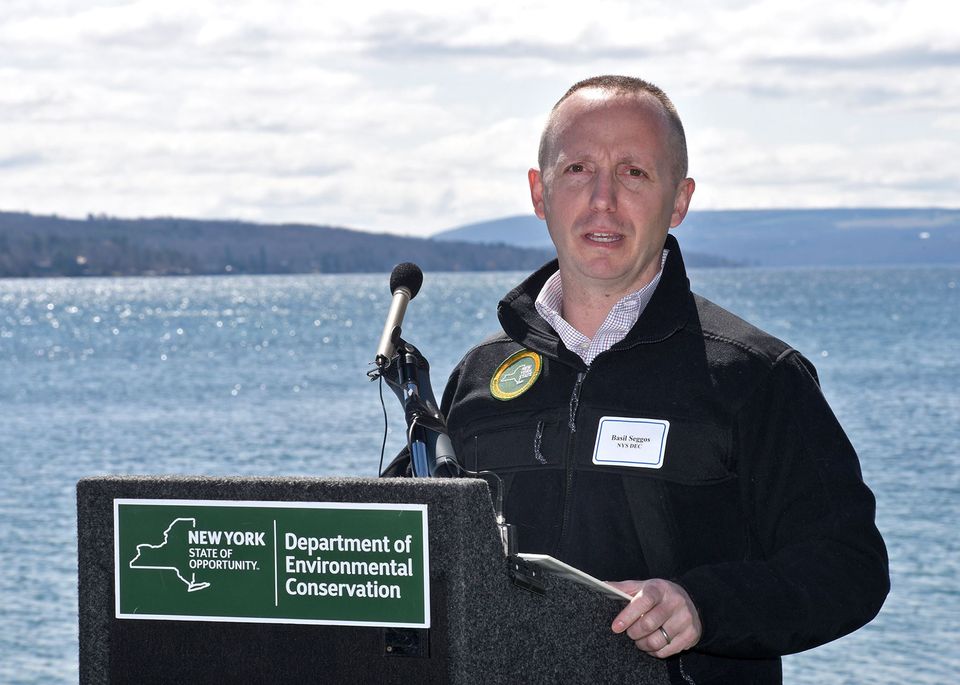
In another changing of the guard, as first reported by The Village Sun, in September Governor Cuomo appointed Basil Seggos chairperson of the Trust’s board of directors, replacing Diana Taylor. Taylor, former Mayor Bloomberg’s girlfriend and the former New York superintendent of banks, had led the board for 13 years. Seggos is also the commissioner of the state Department of Environmental Conservation.
“On behalf of New York State, I thank Madelyn for her steadfast leadership and dedication to the park over the last 10 years,” Seggos said. “Every day, millions of visitors to Hudson River Park benefit from the work that she and the rest of the H.R.P.T. team have done to provide New Yorkers with vital open space and recreational opportunities.”
Vicki Been is a deputy mayor in the de Blasio administration, in addition to being the Trust board’s vice chairperson.
“For nearly a decade, Madelyn has put her heart and soul into building and caring for Hudson River Park on behalf of the millions who enjoy it,” Been said. “Her leadership on projects like Little Island, Pier 26, Pier 57, Gansevoort Peninsula and Pier 97 has helped turn the park into one of New York City’s iconic open spaces.”
However, some local leaders and park activists felt Wils often did end runs around the community and that her moves involving the park’s big projects and initiatives frequently lacked transparency. When the Hudson River Park Trust was created in 1998, many locals feared what they called an “unaccountable authority.” Some would say that some of Wils’s actions made real those concerns.
Because New York City and New York State each owned parts of the the waterfront that became the Hudson River Park, the Trust is a joint state/city authority.
Per a definition on the New York State comptroller’s Web site: “Unlike traditional State agencies, many authorities conduct business outside of the typical oversight and accountability requirements for operations including, but not limited to, employment practices, contracts and procurement procedures, and financial reporting. Each public authority is governed by a separate board of directors appointed by elected officials for varying terms of office.”
Assemblymember Deborah Glick, for her part, cast Wils’s tenure as definitely a mixed bag.
“I think there are certainly things that have worked well in the park and for which there have been positives,” she said.
Glick noted that, to her credit, Wils built out parts of the park and overcame some big challenges, like fighting with the Federal Emergency Management Agency for funding after Sandy. She said she was impressed by the recently opened Pier 26.
“The downside was that the engagement with the community and elected officials left something to be desired,” Glick said. “Madelyn answered to a board not the public and that was part of the problem. The public had a right to have more information and have their perspectives answered to at times. But she had the board, which felt the park had to be [financially] self-supporting, which was not actually the letter of the law, though they felt that way.
“Anyone that has to take on a role that is very public without any real responsibility to the public — it’s a tough thing,” Glick noted, adding, “The board members and Hudson River Park Friends will think Madelyn did a great job.”
The Friends is the park’s main private fundraising arm.
In particular, Glick faulted Wils on her handling of Barry Diller’s glitzy Little Island project.
“Madelyn was not always honest with us,” she said. “She was not honest with us around Pier 54, which is now Pier 55. That was not an honest conversation, not only with me but with the Assembly staff. I’m sure her marching orders were to be as vague as possible.”
Had Wils been upfront that the new pier’s river footprint would be shifted a block or two to the north, the project clearly would have required an environmental impact statement, Glick noted.
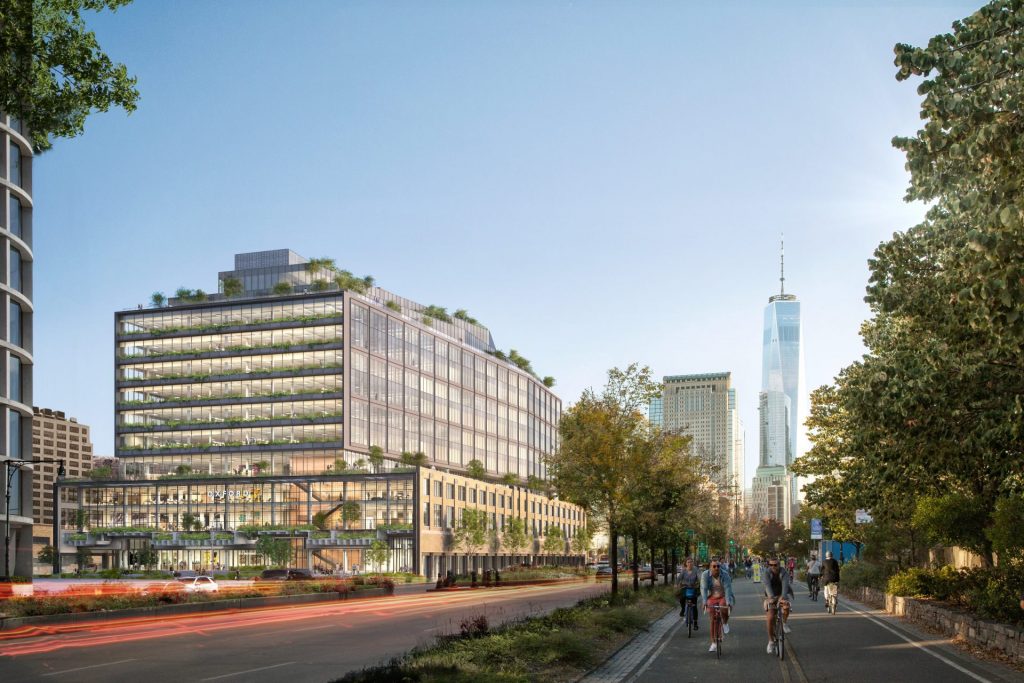
Asked about the park air-rights legislation, Glick said that, in effect, the community was betrayed when a little-considered “Plan B” was abruptly substituted for a major development project at the St. John’s Terminal site in Hudson Square. The plan the community thought it was getting — in return for allowing Pier 40’s air rights to be sold and used to enlarge the project’s size — included a significant amount of affordable housing. Today, however, a new office complex exclusively for Google is being built on half of the site.
The park raked in $100 million from the sale of 200,000 square feet of air rights from Pier 40 to the St. John’s developers.
“We were supposed to get some mixed-income housing, some affordable housing,” Glick said, “and, at the last hour, the city allowed that to be a purely commercial development. If that ULURP [public-review process] that people spent a lot of time and work on had actually come to fruition, there might be a different feeling about [the air-rights legislation].”
Tobi Bergman, a former chairperson of Community Board 2, has over the years been one of Downtown’s most high-profile advocates for the Hudson River Park and, specifically, for youth sports at Pier 40. He felt that Wils was too driven in trying to maximize revenue from the park’s “commercial nodes” — those piers where commercial use is legally permitted — instead of pushing for more government funding for the park.
“Madelyn and her staff did a good job running the park, but she was too committed to the goal of raising money by selling off parts of it for real estate development,” he said. “She incorrectly insisted that the Hudson River Park Act required development within the park to fully support maintenance and operations of the park and instead added to that burden something she called ‘capital maintenance.’ As a result, she failed to work openly with adjacent communities and elected officials to advocate for public support of the park as an important community and regional resource.
“At Pier 40,” Bergman added, “she went overboard, using her position inappropriately to mobilize well-meaning but naive youth-sports leadership to advocate in favor of a huge office development [on the pier] that would have caused permanent harm to the public use of the waterfront.”
Tom Fox, who was the first president of the Hudson River Park Conservancy, the Trust’s predecessor agency, and is a current member of the Hudson River Park Advisory Council, had a more harsh assessment of Wils’s tenure.
“She was very divisive,” he said, “she was very manipulative and she was very secretive. That’s what I saw.”
Fox noted that in 2013 Wils pushed through a slew of amendments to the Park Act in Albany without adequate community notification. The changes were quietly approved at the end of the very last day of Albany’s legislative session. Wils bristled at the term “stealth legislation,” but to many, that label accurately summed up what had happened.
“The Hudson River Park Advisory Council was asked to review the legislation the day before it was passed — without any notice that it was on the [meeting’s] agenda,” Fox said of the changes to the park’s governing law.
Those amendments included, most notably, the aforementioned air-rights transfer provision, as well as allowing a heliport to be permanently based in the park at W. 30th St., he noted.
Fox also criticized Wils and the Trust for working for two years in secret to craft the Pier 55 plan, which, it turned out, called for demolishing the historic Pier 54 — where the Titanic’s survivors had been dropped off. Fox was a plaintiff in a lawsuit that almost killed the Barry Diller-funded project. But Cuomo intervened, revived the Pier 55 plan and promised, if reelected to a third term, that he would complete the full Hudson River Park.
The veteran park activist also faulted the Trust under Wils for taking years to start moving on landscaping the renovated pier slab at Pier 97.
Fox recalled he first met Wils years ago when he was advocating for the Hudson River Park’s creation and she was a member of Community Board 1. He said, to her credit, she supported his efforts back then at a time when Anne Compoccia, the board’s hard-nosed chairperson, would not give him the time of day. Wils would go on to serve as one of the community appointees on the Trust’s board of directors before her stint at E.D.C. and then her return as the Trust’s C.E.O.
Despite his criticism of Wils, Fox granted, “She worked hard.”
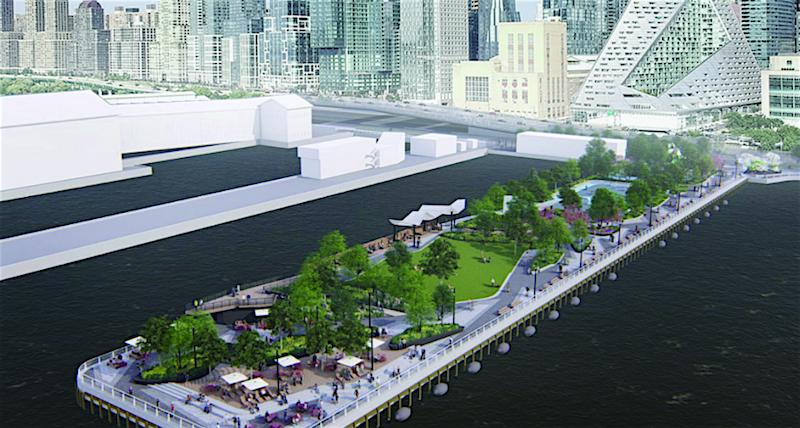
In addition, Wils famously feuded with Douglas Durst, the high-powered developer and major Hudson River Park advocate. In 2016, Durst completed construction on VIA 57 West, a new 700-unit “torqued pyramid”-shaped residential building right across the highway from Pier 97. He had previously clashed with Wils over how to redevelop Pier 40; he personally wanted to do the project, and do it as commercial offices, but the Trust at the time favored a residential approach. Some felt the slow-walking of Pier 97’s redevelopment was payback against Durst.
Durst was appointed to the Trust’s board of directors in 2018 by Manhattan Borough President Gale Brewer, but abruptly resigned this past September.


Brava, Lynn Pacifico. New Yorkers are in desperate need of green: trees, grass, flowers, open green space, not to mention SKY. The Hudson Yards is a stunning example of what we certainly DO NOT WANT in our beloved park, or anywhere near our Hudson River, which, it should be remembered, is a national treasure.
Thank you to The Village Sun for good journalism that shows both sides to these issues. My biggest criticism of the development of the park is its lack of natural areas. In a part of the city that is this dense, and with a critical shortage of natural areas, simple things like real grass and dirt, small “wild areas,” are critical for the well-being of migrating wildlife, us and especially our children. We need more natural areas and this was a missed opportunity.
Bergman put it very clearly.
Poor Basil, he was an independent thinker years ago with Riverkeeper….